Hyperbaric Oxygen Therapy (HBOT) is proving to be a promising method of oxygen therapy in stroke patients, supporting recovery through improved oxygenation and neuroplasticity.
Stroke is a leading cause of disability worldwide, affecting millions. When blood flow to the brain stops, it can lead to serious issues, including permanent disabilities or death.
Recovery from stroke can be tough, and effective rehabilitation is key for improving quality of life. Among treatment options, Hyperbaric Oxygen Therapy (HBOT) is becoming a promising way to support recovery for stroke victims.
This blog looks at the benefits of HBOT for stroke recovery, focusing on oxygen therapy in stroke patients, its impact on stroke risk, and how it can help with memory loss.
Understanding Stroke and Its Impact
A stroke happens when blood flow to part of the brain is blocked or reduced. This prevents brain tissue from getting oxygen and nutrients. There are two main types of strokes: ischemic strokes from blood vessel blockages and hemorrhagic strokes from bleeding in the brain.
Stroke can have devastating effects, leading to physical, cognitive, and emotional challenges. Common effects include:
Physical impairments
Weakness or paralysis on one side of the body, coordination issues, and trouble with daily activities.
Cognitive impairments
Problems with memory, attention, language, and executive functions.
Emotional changes
Feelings of depression, anxiety, and frustration due to sudden life changes.
Because of these challenges, stroke recovery involves medical help, rehabilitation therapies, and emotional support.
The Role of Hyperbaric Oxygen Therapy (HBOT)
What is HBOT?
Hyperbaric Oxygen Therapy is a treatment that involves breathing pure oxygen in a pressurized chamber. This setup allows the lungs to take in more oxygen than normal air. Increased oxygen levels in blood can promote healing and recovery by improving oxygen delivery to tissues.
How HBOT Works in Stroke Recovery
When a stroke occurs, brain cells can be deprived of oxygen, leading to cell death. Restoring oxygen is crucial for recovery. Here’s how HBOT can help stroke patients:
Enhanced Oxygenation
HBOT boosts oxygen delivery to the brain, helping damaged areas recover. This is especially important early in recovery.
Neuroplasticity
HBOT enhances the brain’s ability to reorganize and form new connections, which is vital for recovery.
Reduced Inflammation
Stroke can trigger inflammation in the brain, slowing recovery. HBOT can reduce this response, promoting healing.
Improved Circulation
HBOT stimulates the growth of new blood vessels, enhancing blood flow to the brain. Better circulation can aid recovery and reduce future stroke risks.
Oxygen Therapy in Stroke Patients
Oxygen therapy is critical for stroke recovery. It helps relieve hypoxia (lack of oxygen) in affected areas, supporting cell survival and improving brain function. Studies show that patients receiving HBOT after a stroke may recover faster and have better outcomes.
Hyperbaric Oxygen Therapy and Stroke Risk
While HBOT mainly focuses on recovery, it can also influence stroke risk. Some research suggests that HBOT may help lower stroke risk in certain groups. Here’s how:
Cardiovascular Health
HBOT can enhance cardiovascular health by improving blood flow and reducing inflammation in blood vessels, lowering stroke risk for those with conditions like hypertension or diabetes.
Enhanced Recovery from Previous Strokes
For individuals who have had a stroke, HBOT can support healing and reduce the risk of future strokes.
Preventive Use
Sometimes, healthcare providers recommend HBOT as a preventive measure for those at high risk of stroke, especially individuals with risk factors like obesity or smoking.
Hyperbaric Oxygen Therapy and Stroke Memory Loss
Memory loss is a significant challenge for stroke survivors. Cognitive impairments, including memory issues, are common after a stroke and can greatly affect daily life. Thankfully, HBOT shows promise in addressing these challenges.
The Role of HBOT in Memory Recovery
Stimulating Brain Repair
Research indicates that HBOT can enhance neuroplasticity, helping the brain recover after trauma. By improving oxygen delivery, HBOT may support the formation of new neural pathways for memory recovery.
Cognitive Function Improvement
Studies have shown that stroke patients undergoing HBOT often see improvements in cognitive function and memory, including better attention and memory recall.
Long-Term Benefits
Many stroke survivors face ongoing memory issues long after their stroke. Regular HBOT sessions may help sustain cognitive improvements and support continued recovery.
Stroke Victims Assistance
Recovering from a stroke isn’t just about physical rehabilitation; it also involves emotional support. Many stroke survivors face emotional challenges adjusting to their new reality. Assistance programs can play a crucial role here.
And as a part of their family or friend, it is your responsibility to help them recover.
Emotional Support
Many rehab centres offer counselling services for stroke survivors and families. These services help cope with emotional impacts and provide strategies for dealing with frustration and anxiety.
The patients can get anxious or panicked if they can’t recognize someone or do not understand what one’s saying. At these moments, you should be near them to provide emotional support.
Support Groups
Joining a support group connects stroke survivors with others in similar situations. Sharing experiences can create community and provide valuable emotional support. This way, the survivors will interact with each other. Although they may not gain their speech recovery this early, but with each other’s support, they will start hoping for life.
Family Involvement
Involving family in recovery is essential. Educating family members about stroke effects can create a supportive environment for healing. Guide the family about how their actions and discussions can affect the patient’s mind and they should be vary careful about these things.
Conclusion
Hyperbaric Oxygen Therapy is becoming an important treatment option for stroke recovery. By boosting oxygen delivery to damaged brain tissue, reducing inflammation, and promoting neuroplasticity, HBOT offers various benefits for stroke patients.
As awareness of HBOT increases, more stroke survivors and families are exploring this treatment as part of their recovery plan. If you or a loved one is facing stroke recovery challenges, consider discussing HBOT with a healthcare professional now!
With ongoing research and advancements in medicine, HBOT could soon be a key part of stroke rehabilitation. By addressing both physical and cognitive issues, HBOT may help stroke survivors regain independence, improve quality of life, and bring hope to their recovery journey.




